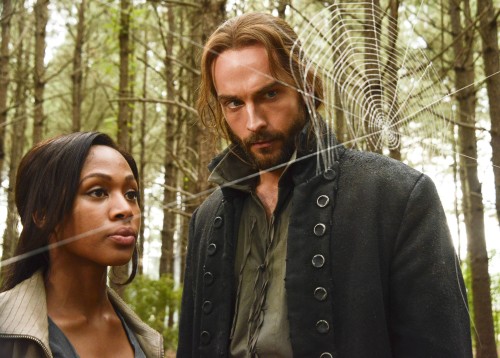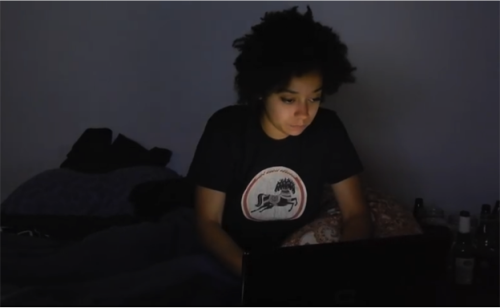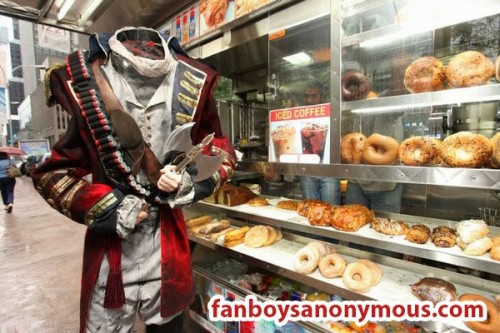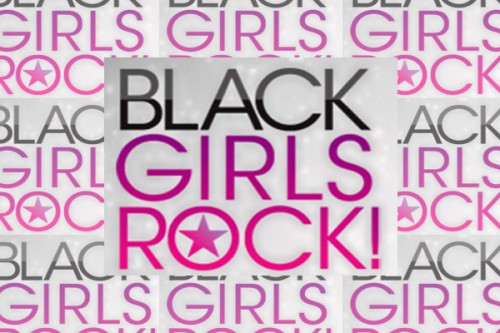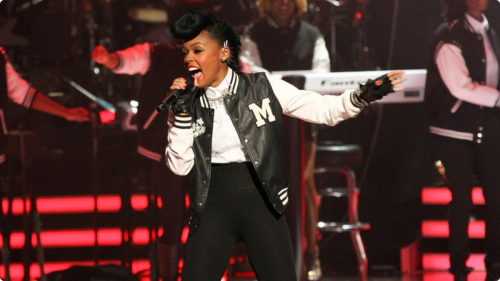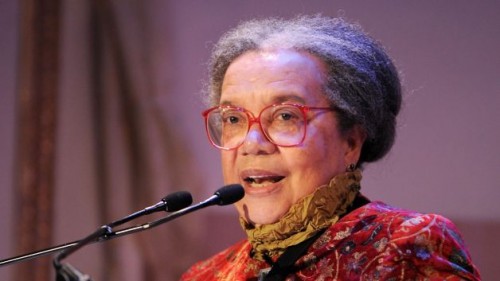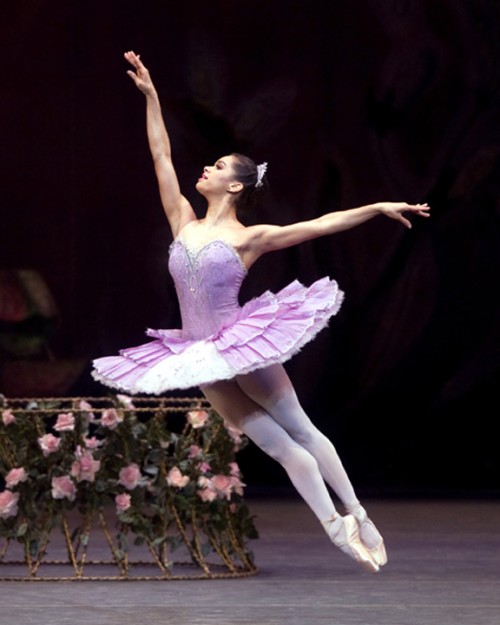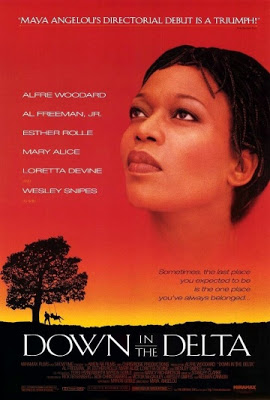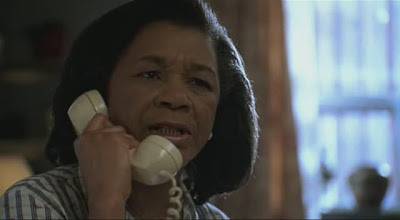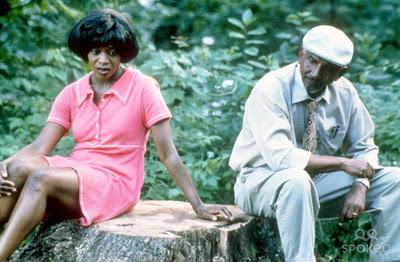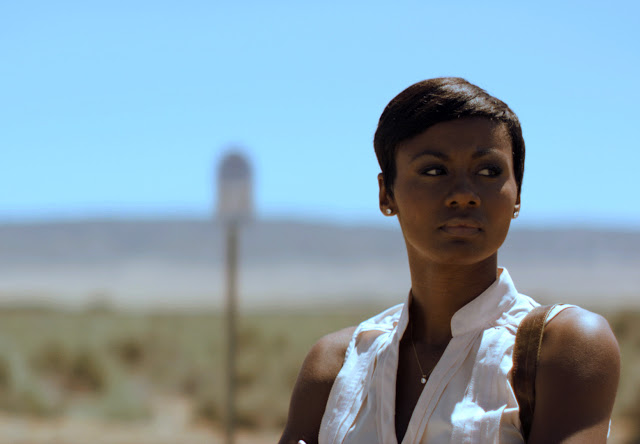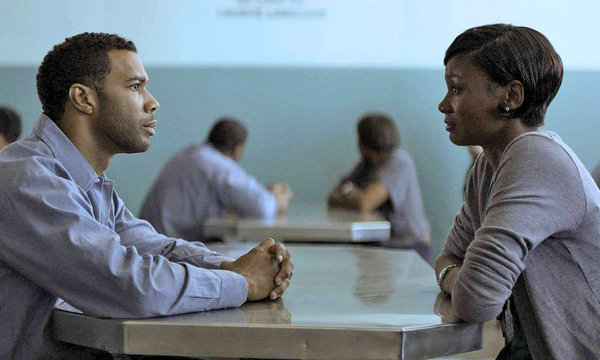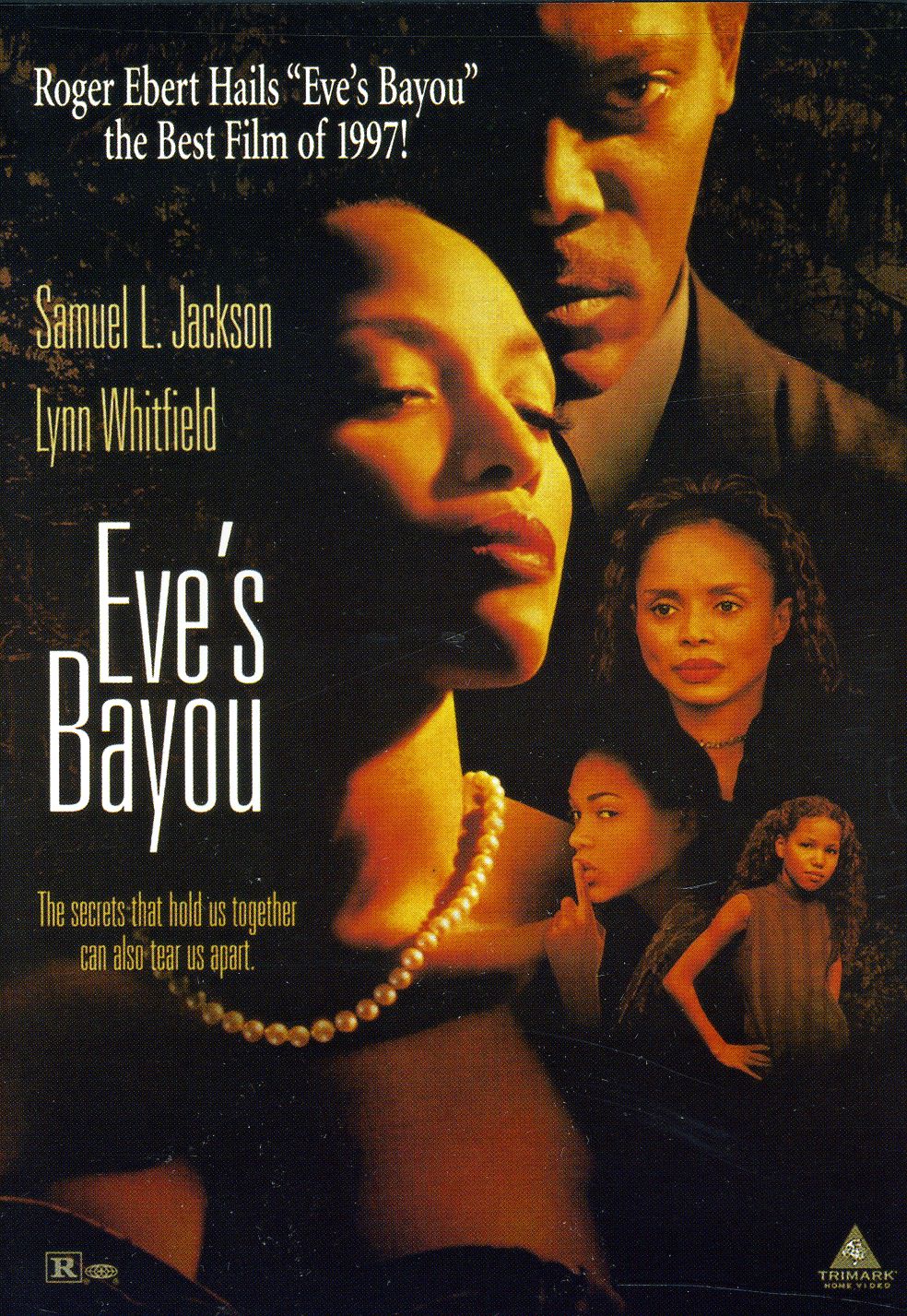
This is a guest post by Giselle Defares.
Television as an mirror that reflects the cultural dynamic that’s present in our society. Ha. There are a few shows that get it right–see the socio-economic depiction in The Wire or the gender politics in Mr. Robot–but more often than not, television formats succumb to trite stereotypes and travel the well-trodden path of TV tropes. The recent change in the TV landscape, “The Golden Age of diversity and representation,” made it seem that there were more roles for actors of color. Yet, the numbers from the 2015 diversity report on Hollywood, Flipping the Script – from UCLA’s Ralph Bunche Center for African American Studies – are only marginally better than previous years.
Veteran showrunners Alex Kurtzman and Roberto Orci are known for their teamwork in sci-fi – see Fringe, Cowboys & Aliens, Star Trek: Into Darkness. They took a chance on a script by Phillip Iscove, who was toiling away as an assistant at UTA, and Iscove sold his pitch based on the “man out of time” element. They teamed up with director/executive producer Len Wisemen, mostly known from his work on the Underworld franchise, to create one of the more kooky TV formats: Sleepy Hollow (2013).
The conversation has shifted in recent years when it comes to the portrayal of Black women who have graced our screens. From the groundbreaking start with the working single mother Julia Baker on Julia, to the mid-1970s with the working-class housekeeper Florida Evans in Good Times, followed by educated womanhood in the form of Clair Huxtable in the 1980s with The Cosby Show, to the Black professionals such as Maxine Shaw in Living Single, independent women Pam and Gina in Martin, to Whitley in A Different World. Funnily enough, in the 1990s most channels featured shows with a diverse cast. However, once the ratings were high enough they would replace them with mostly white-orientated shows after the network got traction – see UPN, CW, WB, FOX.
Most would say that the reign of Shonda Rimes and her Shondaland production company paved the way for Black characters such as Miranda Bailey in Grey’s Anatomy, Olivia Pope in Scandal, Annalise Keating in How to Get Away with Murder. Other networks followed suit and there’s Mary Jane Paul on Being Mary Jane, Rainbow Johnson on Black-ish, and we can’t forget about Ms. Cookie Lyon on Empire. It’s refreshing to see a variety of Black women represented on the screen. Characters who’re not molded in the archetypes that are damaging society’s perception of Black women – think Strong Black Woman, Mammy, Jezebel, Video Vixen, and so on.
Not every (main) Black character gets the treatment they deserve and debunk archetypes. Characters such as Tara Thornton in True Blood, Bonnie Bennett in The Vampire Diaries, Lacey Porter in Twisted, Iris West in The Flash, and Abbie Mills in Sleepy Hollow, are coming together as captivating women who are used to promote diversity in the show and are slowly pushed aside when the fan base is secured and TPTB still think they have to cater to a certain demographic. Well, it seems that the bait and switch tactic never went out of style.

The premise of Sleepy Hollow sounds farfetched, but somehow it work(s)(ed). The show is loosely based on The Legend of Sleepy Hollow by Washington Irving. Ichabod Crane (Tom Mison) wakes up in our century and has to stop the Headless Horseman from starting the Apocalypse. He meets Lieutenant Abbie Mills (Nicole Beharie) and together they are the “Witnesses” who will stop the Apocalypse as is written in the Book of Revelation. The duo gets help from Abbie’s sister, Jenny Mills (Lyndie Greenwood), who has in-depth knowledge on the evil forces and artifacts. The stern Captain Frank Irving (Orlando Jones), Abbie’s boss, who reluctantly starts to believe in their cause; and finally the whispery Katrina Crane (Katia Winter), Ichabod’s wife, who “tries” to help the team whilst being stuck in ‘a world between life and death’ a.k.a purgatory, which is ruled by the main antagonist Moloch.
In essence, it’s a tried formula. There’s the overarching mythos of Sleepy Hollow, sprinkled with an ‘army of evil, Lt. Abbie Mills as the reluctant character who works hard and suppresses her own demons and deals with family concerns. Of course her partner is a snarky, knowledgeable yet flawed British hero who fully believes in the mythology. Nevertheless, the chemistry between Mison and Beharie is electric and lured fans in to join the duo on their (un)believable journey. Credit also goes to the multi-racial supporting cast with John Cho as police officer John Brooks, Nicholas Gonzalez as Detective Luke Morales who’s also Abbie’s ex-boyfriend, Jill Marie Jones and Amandla Stenberg as respectively Frank Irving’s ex-wife Cynthia and daughter Macey.
Season 1 was fun, period. It was accepting of all the cheesiness and ran with it in order to create solid (cult) television. Sure, the dialogue was clunky, there were small loose ends, the pacing was off, but it didn’t matter. The diverse cast really made it work. In October 2013, executive producer Heather Kadin even joked: “[..]because we have so much diversity in our cast and we’ve had the freedom to cast our villains and victims however we want, so we can kill as many white people as we want.” It now turned out that it was too good to be true.
Sleepy Hollow became the surprise freshman hit of the season. Fox quickly renewed the show after only two episodes aired and didn’t order the back nine episodes – usual concept for network shows – and kept the show at 13 episodes. Fox later upgraded the show to a total of 18 episodes for season 2. So, the showrunners had the time – there are 10 months between the first and second season – to focus on season 2 in order to make it bigger and better. Right. From the mediocre promotion for the second season, to the casting announcement of Matt Barr as Indiana Jones’ reject Nick Hawley who essentially plays the same role as Jenny Mills, to Alessandra Stanley’s inaccurate NYT article that unjustly called Beharie a sidekick. It was merely the alarm that showed us how season 2 would play out. The bait and switch was almost a self-fulfilling prophecy.

Season 2 has aptly been named by some as “the screenwriters guide of how not to write a show.” One of the catalysts of the demise of season 2 is the fact that Kurtzman and Orci left to do other projects and instilled their faith on showrunner Mark Goffman. Sure, Goffman earned his stripes with series such as White Collar, but he couldn’t handle Sleepy Hollow.
It’s mindboggling that the Juilliard-trained Beharie, who proudly advocated for her character in an interview with Essence – and didn’t expect to portray a tough, cop character with her 5′ 1″ stature and African American background – was pushed aside in favor of “The Crane family drama.” Katrina Crane’s story arc was deplorable. She was touted as a powerful witch from the start. Instead she was only used as a plot device in the first season. They tried to flesh her character out in season 2 and failed. Ichabod Crane became a moping know-it-all (more than usual) who ignored Abbie’s advice to keep focused on their common goal. Fringe’s John Noble was wasted as Ichabod and Katrina’s son who turned out to be The Horseman of War and got his mother pregnant with an evil, demon baby – don’t ask. Not to mention that the Headless Horseman became a woobified character, “grew” a head, and turned out to be Katrina’s ex instead of a menacing villain. The Powers That Be (TPTB) molded Katrina into a damsel in distress that ate up the screen time that should have further explored the relationship between Abbie and Jenny, Abbie and Ichabod, basically everything surrounding Abbie Mills.
The other members of “Team Witness” didn’t fare better. Lyndie Greenwood was promoted to series regular, but was most of the time nowhere to be found in favor of Nick Hawley. Captain Frank Irving and his family’s storyline was cast aside, only to be shortly revived in the most ridiculous way. The show was at its best when Team Witness came together to fight evil and showed the underlying dynamic between the different characters. Add that with the casting of House of Cards actress Sakina Jaffrey as Sheriff Leena Reyes, who has an connection with Abbie’s past, but was severely underused throughout the show.
The diversity of the cast gave the wobbly storyline that extra spunk. Characters of color who seamlessly worked together and aren’t focused on anyone’s race and color – though the show doesn’t hide from commenting on race. Abbie and Jenny are normal, intelligent, layered characters with flaws who’ve showed their vulnerable side, thus debunking the archetype of “The Strong Black woman.” Most fans – and critics- were frustrated after eight episodes had aired of the second season. The diversity and representation went right out of the window with the start of season 2.
Social media further added fuel to the fire within the fandom. At the start of the first season, Orlando Jones quickly broke the fourth wall. He created his own Tumblr page and participated in fandom discussions. Jones actively created more promotion for the show than whatever the Sleepy Hollow PR department was/is trying to do.

The unrest in the fandom sparked the #AbbieMillsDeservesBetter hashtag, where fans could vent their frustrations and asks the writers and staff of Sleepy Hollow why Beharie has been pushed to the background in a show in which she’s a lead character. Sleepy Hollow writer Raven Metzner came under fire on social media when he lashed out to the “haters” of the show. The show slightly redeemed itself with the last four episodes – even with the plot where Abbie was transported back to Ichabod’s time and was seen as a slave, they tiptoed the line with the racial insensitivity, but handled it well. Now, not only was Abbie shelved in the show, apparently Beharie was initially left out on the DVD commentary for season 2.
Sci-fi and fantasy writer Genevieve Valentine at io9 made some valid points when it comes to the trajectory of the show. In a series of Tweets she explains, “The unexpected success of season 1 relied heavily on tweaking tropes – not least of which was the trope of the white mythical heroes. [..] This show cannot be trusted with its own story, and that’s a sad place of no-faith to be coming from with the cast and potential it has.” So, the bait and switch from season 2 didn’t work out as planned. Fans and critics alike have voiced their opinions, but will the necessary changes be made?
The criticism didn’t go unnoticed. During the TCA press tour in January, Fox TV chairman and CEO Dana Walden mentioned that the show will be less serialized and have a slightly lighter tone in the future. Well, one of the first changes is a cross-over with the crime procedural show Bones (!). Soon after came the news that Orlando Jones involuntarily left the show. This is a blow for the promotion of Sleepy Hollow. Neither Mison nor Beharie are very active on social media whether it’s promoting the show or engaging with fans; however, Greenwood picked up the baton from Jones.
Furthermore, on August 2, the new showrunner Clifton Campbell (The Glades), told TV Guide that the Headless Horsemen won’t return this season. He said, “But we have a new framework and a new set of rules for the mythology.” Yeah, look how that previously turned out.
The storyline will jump one year ahead. This will give Ichabod the time to grieve over his wife and son, and maybe get a job to start paying the bills. Abbie will be more focused on her job now as an FBI agent. Still, the casting for season 3 went off with a rough start with the announcement of Nikki Reed (Twilight) as series regular Betsy Ross (the legendary seamstress apparently had a thing with Ichabod back in the day), and she will bring a “smart and sexy edge” to the show. Wayward Pines’ Shannyn Sossamon will play the mysterious woman Pandora who asks Ichabod and Abbie for help. It almost seems that TPTB didn’t get the memo. Fans and critics alike asked for more focus on Ichabod and Abbie and Team Witness. Luckily some recent additions seem promising. Lance Gross (Crisis) makes his debut as Abbie’s boss and we’ll see the return of fan-favorite Zach Appelman as Joe Corbin.
So, why stick with Sleepy Hollow? First off, Nicole Beharie is captivating as Lt. Abbie Mills and we need to see more diverse Black leading women on tv. After all, that’s true representation. Secondly, the nuanced relationship and charm between Tom Mison and Nicole Beharie. It’s a natural chemistry that seems so effortless. It would be a waste not to enjoy it while you can. Thirdly, the bait and switch tactic was disastrous for the show; TPTB are still trying to recover from that, it’s only onwards and upwards from here.
The realm of sci-fi and fantasy offers many possibilities to challenge the status quo. It’s the ultimate platform to show diversity and portray a more nuanced characterization of people. Let’s hope that Sleepy Hollow can pull of what it has planned and there will be no need to dust off the #AbbieMillsDeservesBetter hashtag.
Giselle Defares comments on film, fashion (law) and American pop culture. See her blog here.
